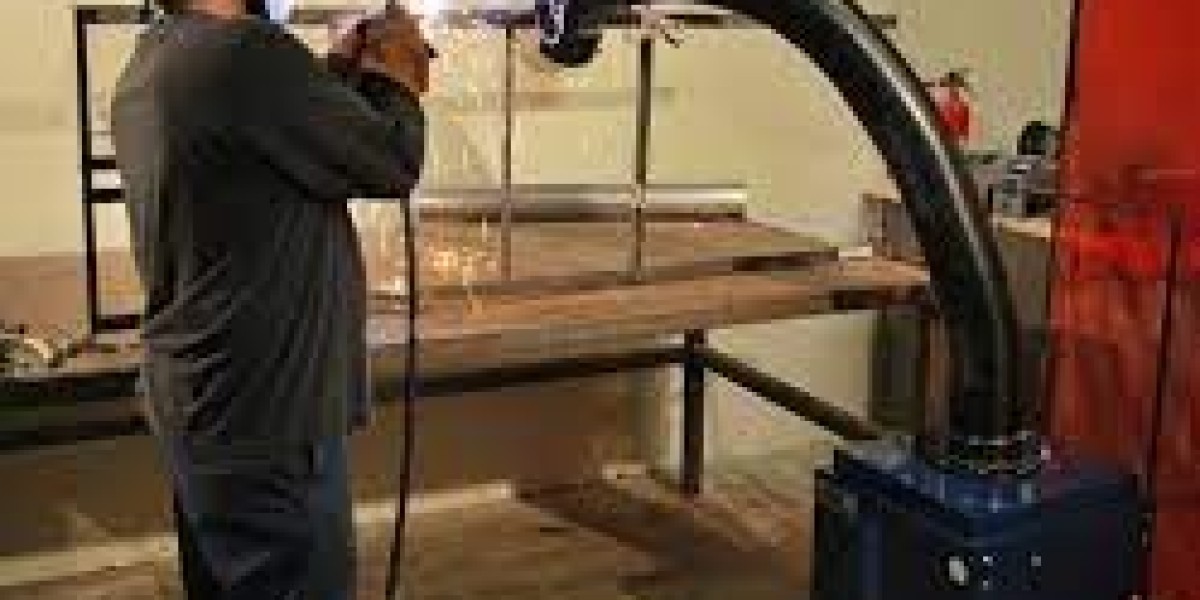Introduction: Welding processes are widely used in various industries, but they often generate hazardous fumes and gases that can be detrimental to the health of workers and the surrounding environment. To mitigate these risks, welding fume extractors have been developed to effectively capture and remove welding fumes, ensuring a safe and healthy work environment. In this article, we will explore what a welding fume extractor is, how it works, and its importance in welding operations.
Definition of Welding Fume Extractor: A welding fume extractor is a specialized equipment designed to remove and filter harmful fumes, gases, and particulates generated during welding processes. It consists of a suction unit, a filtration system, and sometimes additional features such as extraction arms or hoods to capture fumes directly at the source.
Working Principle of a Welding Fume Extractor: Welding fume extractors operate based on the principles of suction, filtration, and ventilation. The extraction unit creates a negative pressure zone, pulling the contaminated air towards the unit. The contaminated air is then passed through a series of filters, which remove harmful particles and gases, before the purified air is released back into the environment.
Components of a Welding Fume Extractor:
Suction Unit: The suction unit is responsible for creating the necessary airflow to capture and transport the welding fumes. It typically consists of a fan or blower that generates the airflow and a motor to drive the fan.
Filtration System: The filtration system is a critical component of a welding fume extractor, as it removes harmful particles and gases from the contaminated air. It usually comprises multiple filters, including pre-filters, main filters, and sometimes additional specialized filters such as activated carbon filters for gas adsorption.
Extraction Arms/Hoods: Extraction arms or hoods are optional accessories that can be attached to the welding fume extractor. They provide a localized capture point close to the welding operation, improving the efficiency of fume extraction by directly capturing the fumes at the source.
Working Process of a Welding Fume Extractor:
Placement and Setup: The welding fume extractor is positioned strategically near the welding operation to capture fumes effectively. The extraction arm or hood, if used, is placed close to the welding area.
Activation: The welding fume extractor is switched on, and the suction unit starts generating the necessary airflow. The extraction arm or hood, if present, creates a localized capture point.
Fume Capture: As welding commences, the fumes are generated and released into the air. The extraction arm or hood, if used, captures the fumes directly from the source. The suction unit creates a negative pressure, pulling the contaminated air towards the extraction point.
Filtration: The contaminated air passes through the filtration system of the welding fume extractor. The pre-filters remove larger particles and sparks, protecting the main filters from premature clogging. The main filters, often high-efficiency particulate air (HEPA) filters, trap smaller particles and dust. Specialized filters, such as activated carbon filters, can remove gases and odors.
Air Purification: The purified air, now free from harmful particles and gases, is released back into the environment, ensuring a clean and healthy workplace. Some welding fume extractors may recirculate the purified air, while others may vent it outside the building.
Importance of Welding Fume Extractors:
Health and Safety: Welding fumes contain hazardous substances, including metal oxides, gases, and fine particulates, which can cause respiratory problems, lung diseases, and other health issues. Using a welding fume extractor helps protect workers from these harmful contaminants.
Compliance with Regulations: Many countries have strict regulations regarding welding fume exposure limits in the workplace. Implementing welding fume extractors helps companies comply with these regulations, avoiding penalties and legal issues.
Enhanced Productivity: A clean and healthy work environment improves the productivity and efficiency of workers. Welding fume extractors prevent fumes from obstructing the vision of welders and reduce the risk of fatigue caused by exposure to contaminants.
Environmental Protection: Welding fumes can also have a negative impact on the environment if released untreated. Welding fume extractors help mitigate this by capturing and filtering the fumes before releasing the purified air back into the atmosphere.
Conclusion: Welding fume extractors are essential equipment in welding operations to ensure the health and safety of workers and protect the environment. By capturing and removing harmful fumes, gases, and particulates, these devices create a clean and healthy work environment, complying with regulations and improving productivity. Employing welding fume extractors demonstrates a commitment to worker well-being and responsible industrial practices.






